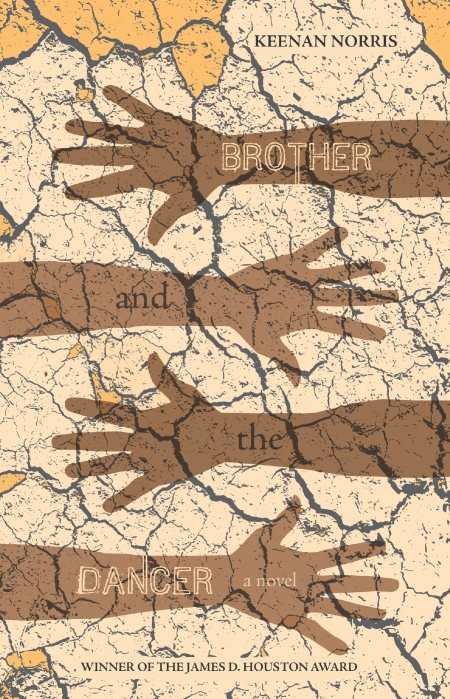Brother and the Dancer
Norris’s writing is meticulous and incisive. His convincing passages convey philosophic truths about the consequence of choice and the quest for self-awareness.
Keenan Norris’s debut novel is an engaging, eloquent, and insightful coming-of-age story about two African-American teenagers whose search for identity is informed by their city, class, and culture.
Touissant Freeman and Erycha Evans live ten minutes from each other in Highland, a city in California’s Greater San Bernardino area. Yet their backgrounds couldn’t be more different: Touissant hails from suburban, middle-class East Highland; Erycha Evans resides in urban, working-poor West Highland. As they pass from childhood to adolescence and to young adulthood, Touissant and Erycha must confront long-standing and narrow-minded divisions between places and people and decide whether or not this separateness will define them.
Touissant, who is named after Toussaint L’Ouverture, leader of the Haitian Revolution, basks in a privileged world of perfect teeth and married parents. Aloof and pensive, Touissant expands his worldview when he learns about urban violence in West Highland and the social conditions that contribute to it. Suddenly, his advantages in upbringing and class seem meaningless compared to the incomprehensible and intractable hopelessness of black life. High school presents more displacement, and Touissant fabricates an identity in order to be accepted by his classmates. He cannot sustain these contradictions for long, and when once Touissant believed his future to be beautiful, now he sees it “only darkly.”
Erycha endures in a world of poverty, crime, and bad behavior. Her mother is distracted, her father is shiftless, and their apartment is cramped. Fearful of becoming trapped in the ghetto like a “scrambling hoodrat,” Erycha aspires to be a ballet dancer. Her close-minded community deems ballet a rich person’s pursuit unwelcoming of black girls. Although Erycha stiffens her resolve against this condemnation, doubt looms. Like Touissant, Erycha must reconcile the contradiction between who the girl in the ghetto is and who the girl in ballet slippers wishes to be.
Norris structures his novel in alternating chapters—a shifting in viewpoints that displays Norris’s ability to control narrative and create a multilayered, unflinching, and richly detailed story. Touissant’s episodes are rendered in staid, mature, unfaltering prose, which reflects Touissant’s reserve. Erycha is more social and gritty. Her chapters are dialogue-driven and express the “wild troublesome loveliness of black culture.” Within these conversations, Norris composes a resounding symphony of slang and street lingo that is as authentic as it is evocative.
Norris’s writing is meticulous and incisive. His convincing passages convey philosophic truths about the consequence of choice and the quest for self-awareness. This is not frivolous stuff, and both main characters are deep thinkers. Yet Norris never lapses into ponderous prose. His pace is elegant and unhurried, affording him time and space to tell this tenderhearted and distinctly American story.
Accomplished and resonant, Brother and the Dancer is an outstanding debut.
Reviewed by
Amy O'Loughlin
Disclosure: This article is not an endorsement, but a review. The publisher of this book provided free copies of the book to have their book reviewed by a professional reviewer. No fee was paid by the publisher for this review. Foreword Reviews only recommends books that we love. Foreword Magazine, Inc. is disclosing this in accordance with the Federal Trade Commission’s 16 CFR, Part 255.

